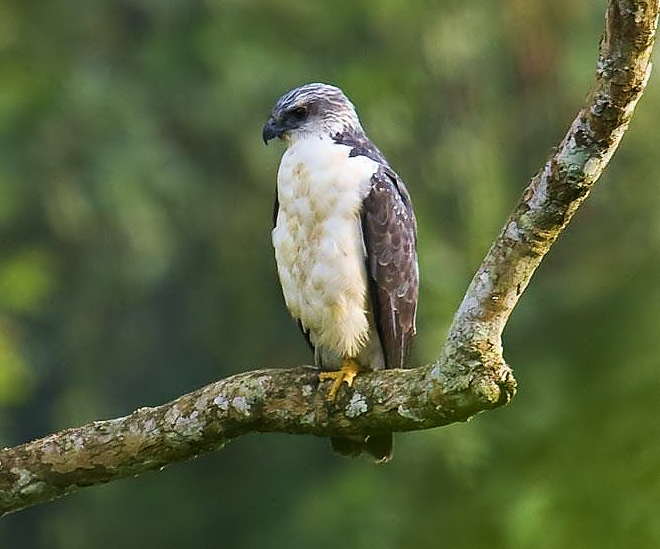 |
| Photo by Dusan Brinkhuizen (Internet Bird Collection) |
Common name:
grey-backed hawk (en); gavião-de-dorso-cinzento (pt); buse à dos gris (fr); busardo dorsigrís (es); graurückenbussard (de)
Taxonomy:
Order Falconiformes
Family Accipitridae
Range:
This species is only found in western Ecuador and adjacent parts of north-western Peru, having a very fragmented range.
Size:
These birds are 45-48 cm long.
Habitat:
The grey-backed hawk is found in deciduous and evergreen tropical forests, including dry forests, moist forests and cloud forests, at altitudes of 100-2.900 m.
Diet:
They have a very diversified diet, the largest proportion consisting of reptiles, but also mammals, birds, crabs, amphibians, large insects such as beetles and katydids, and earthworms. The most common prey are snakes and rice rats Oryzomys.
Breeding:
Grey-backed hawks can breed all year round. The nest is a small, well hidden structure, made of fresh and dry sticks and lined with green sprigs and green leaves. It is placed in a tree 14-35 m above the ground. The female lays a single, unmarked, bluish-white egg, which she incubates alone for 36 days while the male brings her food. The chick fledges 10-12 weeks after hatching.
Conservation:
IUCN status – EN (Endangered)
This species has a small and highly fragmented breeding range. The global population is estimated at just 250-1.000 individuals and is suspected to be declining at a moderately rapid rate. The main threat to the grey-backed hawk is the extensive habitat destruction and fragmentation throughout its range, with over 90% of west Ecuador now deforested due to clearance for timber and agriculture, and intense grazing pressure from goats and cattle in the forest understorey. Human persecution is also a major threat in some areas.







